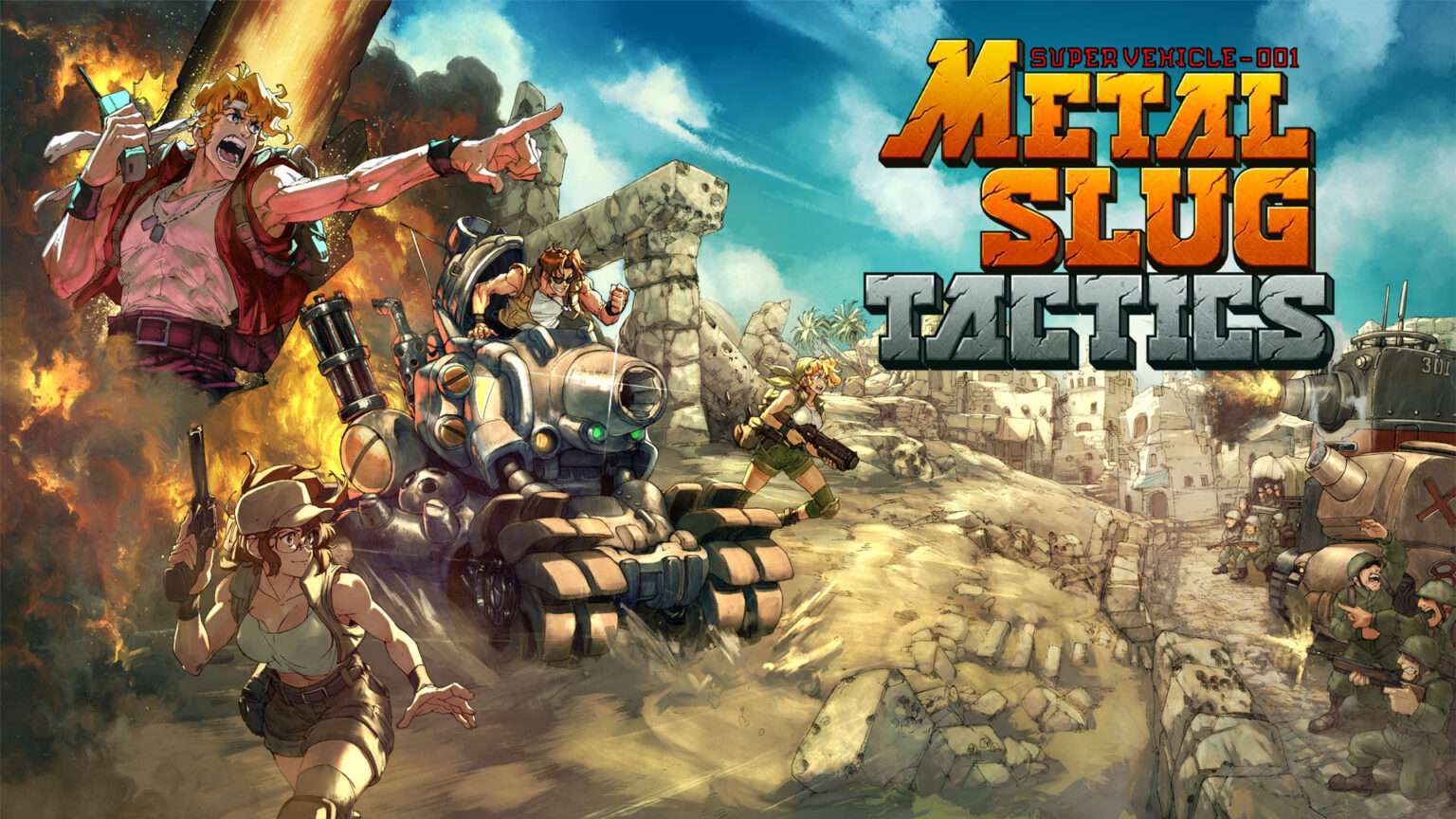This Metal Slug Tactics review is made by playing and testing the XBox Series X version. Metal Slug Tactics is also available for PC, Nintendo Switch and Playstation 4 and 5. It is available in Xbox Game Pass and otherwise €/$ 24,99.
Dotemu, Leikir Games, and SNK combined their forces to revive one of the more niche retro franchises from its dormant state. Perhaps not in the way hardcore fans expected—or even wanted. Still, speaking for myself, I might just be the perfect person sitting at the intersection of the Venn diagram: both a lover of the Metal Slug run-and-gun games and an enthusiast of a good turn-based tactical RPG. The latter, of course, on the strict condition that it’s fun.
Of the many tactical RPGs released in recent years, plenty are deep, complex, and thorough. However, in my humble opinion, games with too much depth often lose the snappy, enjoyable quality I crave. On the flip side, overly simplistic games quickly fall into boredom. So, it’s up to Metal Slug Tactics to prove it can strike the sweet spot between the two, while also carrying over the charm of its franchise predecessors.
The beauty of War
SNK’s Metal Slug franchise has been celebrated by many for it’s obvious qualities. Back in the mid-90s, the colorful and high detailed graphics attracted gamers to the MVS arcade cabinets wherever it showed up. The high number of frames of animation almost drew the quite powerful MVS board to a snail pace at times with so much stuff exploding and flying across the screen. Secondly, the off-the-wall and slapstick humor visualised predominantly by the caricatured fascist enemies, never translated so well into a video game as with the original Metal Slug.
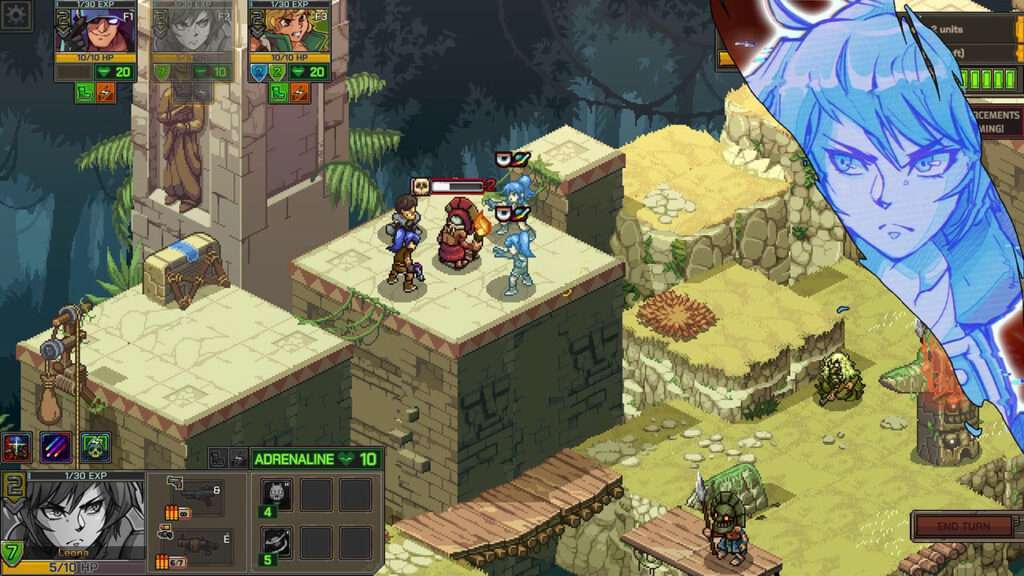
Now, in 2024, Leikir games got the keys to franchise and created a game that aims to transplant the visual allure to a completely different genre. You can say the party’s involved take a somewhat uncalculated risk, as I don’t see a clear crossover between earlier Metal Slug games and the turn based tactical genre. Reactions on the reveal trailer were quite positive due to Dotemu being involved and the trailer being a passionate cross over between early gameplay and lovely animated cartoon. So, tons of trust and anticipation was build upon that trailer, with eventually having excited fans to wait three long years before new gameplay to pop up and at long last a release day.
Turn based Tactics meets Rogue-like
The biggest question lingering in my mind was whether Leikir Games would go all the way with the turn-based tactical gameplay or somehow find a way to give action shooter fans an angle to latch onto. Well, it turns out they’ve delivered a pretty deep tactical experience with a thick coating of “roguelike” added for flavor.
You start out at your hideout, where you can buy power-ups for your gear and passives, as well as manage your characters—nine of which are unlockable, with three available from the start. In true roguelike fashion, you begin runs on the battlefield. Along the way, you pick up additional special actions and passive buffs. If you fail one of the missions during your run, you return to the hideout to invest the money you earned and found. When you start a new run, you’ll keep the power-ups you’ve invested in, but you’ll lose all the buffs gained during the previous run.
The map you play on is divided into four parts, which you’ll recognize from the shoot ’em ups. Each section has five or six missions to play, with a pathway determining which missions are accessible. After clearing four missions, you’ll face the boss. Beating the boss clears the section, allowing you to start beyond that point, restock your secondary weapon, and unlock more buffs.
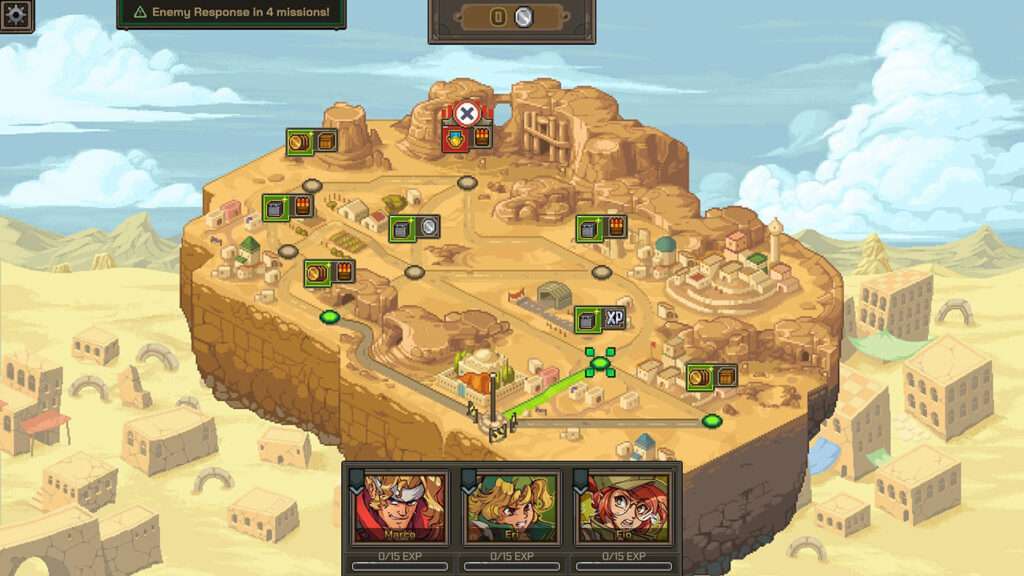
Tactical Goodness
Each mission offers bonuses for completing the primary and secondary objectives. These could include money, an ammo refill, or additional continues to revive KO’d characters on the battlefield. You’ll need to use these wisely, as they—like secondary weapon ammo—are limited resources.
The checkerboard tactical gameplay sits somewhere between Final Fantasy Tacticsm in terms of visuals and map layout, and Fire Emblem in terms of the battle system. Each weapon has a specific attack pattern and range, which should feel familiar to Fire Emblem fans. Buying weapon buffs can modify the attack pattern and enhance the destruction your gear can unleash. The characters also have widely varying attack capabilities, making it highly rewarding to mix and match them—especially when factoring in the Synchronization feature. When you attack, having enemies in the line of fire of your other characters will sync them up (two or three at a time) for additional damage. This core mechanic can be used to devastating effect.
Even more powerful is the use of active specials and buffs you pick up along the way—such as attack specials like an airstrike. Combining these specials with buffs can amplify the damage you deal, turning the tide of battle in your favor.
Dodge, Adrenaline, and Synchronize
The battle system works with Dodge and Adrenaline. Build up your Dodge counter to avoid incoming attacks, even if your attacker is right next to you. Adrenaline provides points to spend on special attacks or active buffs. You increase both counters by moving your character around the map. The darker green the tile you move to, the higher the amount of Dodge and Adrenaline you gain. Moving to a dark green tile essentially makes you invincible, while moving to a light green tile leaves you vulnerable to high damage.
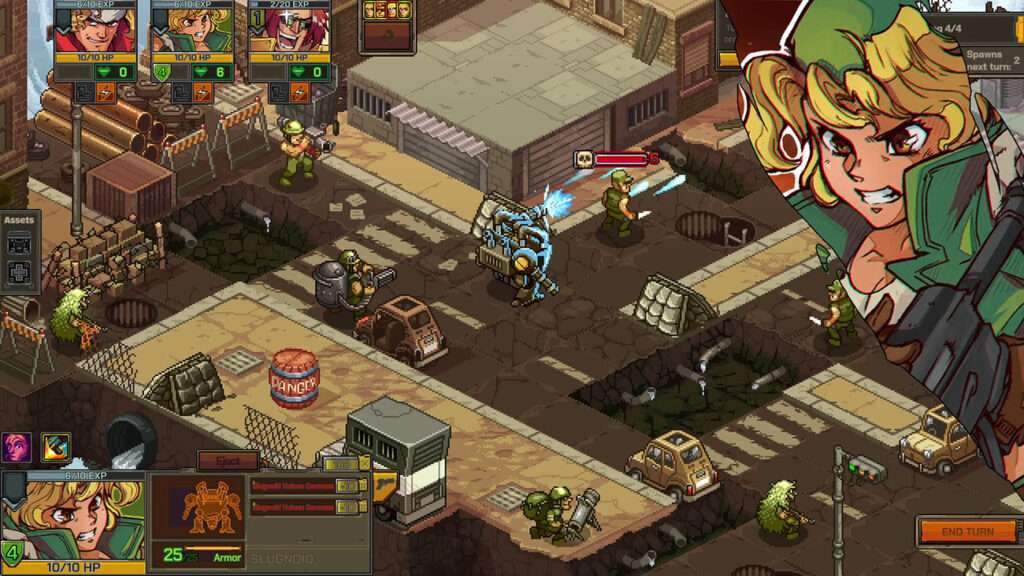
I really like the core tactical gameplay. The roguelike elements, however, tickle me in two ways. First off, the only thing that came to mind was, “not again.” Having to juggle roguelike features while processing all the tactical gameplay at once is quite daunting—especially at the start. Early on, the weapon power-ups make no sense, and you can’t afford to buy anything. You have no money, and the first three or four runs feel like exercises in simply accumulating enough resources to make meaningful decisions.
Pixel Art Greatness
But if you push through this daunting beginning and stick with it, the game really comes together in a fascinating way. First off, it looks absolutely gorgeous. What the gameplay may lack in direct connection to the franchise is more than made up for by the pseudo-pixel art and animation. Every enemy and boss from Metal Slug’s heritage is here and accounted for. The game replicates every tiny animation detail, whether it’s idle animations, deaths, or something else. The most iconic levels of the shoot ’em ups have been transformed into a beautiful cross between a chessboard and Warhammer maps, most reminiscent of Final Fantasy Tactics. The same goes for the music, which has been wonderfully adapted as well.
Secondly, the Tactics-bit in the game, once accustomed to it, is pretty bang-on. The mechanics are deep enough to keep you searching for the most effective way to tackle the mission at hand, whilst keeping while not wasting consumables and character continues, you may need further on in your run. The bosses are Tactics-versions of the level bosses (for that particular area) in the shoot’em up games. The way the bosses attack is very creative and much fun to battle.
Not for Everyone
So, you might get a feel for the layered tactical gameplay at hand here. But with little connection to the original’s run-and-gun action, you may wonder whether Metal Slug Tactics will click with fans of the high-adrenaline gameplay the Metal Slug series is known for. Shooting from the hip, I’d say no. Tactics is a fully-fledged tactical roguelike with a fairly steep learning curve. It took me a good two hours to get a grip on the mechanics, which wasn’t helped at all by the convoluted UI and tutorial pop-ups. These pop-ups get in your face in the most annoying ways imaginable—lots of text in an incredibly small font size.
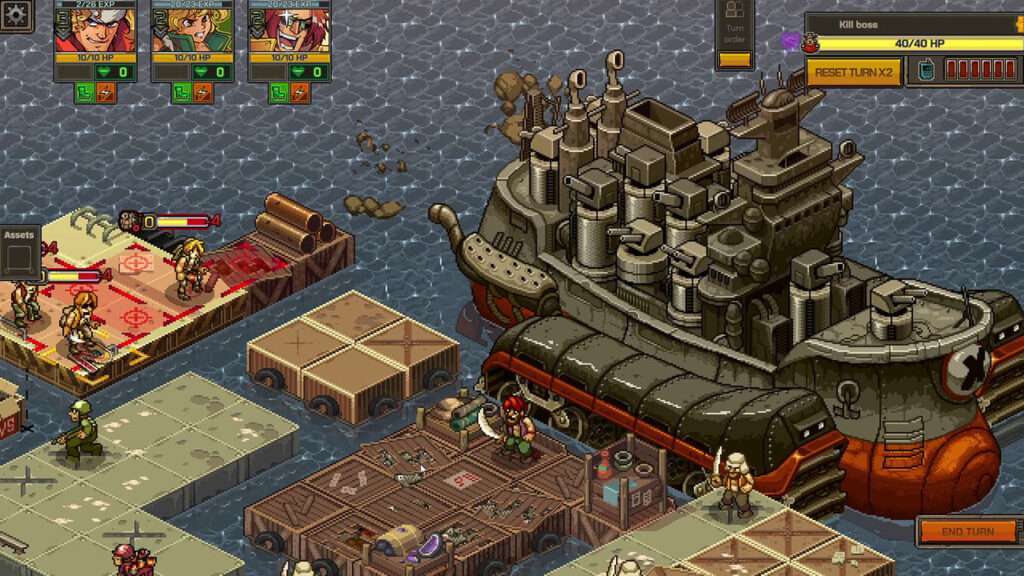
My big takeaway, though, is that once you get an idea of what passives and power-ups to collect during a run, the bosses become a piece of cake. While the later levels can overwhelm you with the sheer amount of resistance on the map, the bosses mainly demand patience and keeping your adrenaline high. In essence, the game builds up to a sweet spot where you feel in control of the mechanics, and the difficulty feels just right. After that, you can get a bit overpowered, and from that point, the enjoyment shifts to leveling up the new characters you unlock along the way. So, you could say the roguelike rinse-and-repeat gameplay gets in the way of fully sinking your teeth into it, unlike great tactical RPGs like Fire Emblem: Three Houses and Unicorn Overlord. Those games feature more linear progression and typically deliver their peak enjoyment much later in the overall playtime.
Why So much Roguelike?
That’s not to say I didn’t thoroughly enjoy the actual battles once I got well into a run. I just dreaded starting over—to the point where I had to stop and come back to start another run the next day. Adding to the frustration, some missions (escort missions, for instance) are so easy to mess up that they could end your run entirely, even when you’re fully confident in the setup and team you’ve built along the way. I know this is roguelike 101, but I would’ve enjoyed the experience more with a linear progression system.
In terms of structure, this may be a mixed bag for many players. Fans of Metal Slug who loved the high-octane, gun-blazing action may feel out of place here, aside from the immensely pleasing and nostalgic pixel art. Turn-based tactics enthusiasts might struggle with the roguelike, rinse-and-repeat progression. That said, the turn-based tactical gameplay is extremely fun and well-executed. Players who are open to something different and have the patience to let the somewhat overwhelming mechanics grow on them will undoubtedly find plenty of enjoyment in it.
Pros:
- Fun turn based tactical action
- Gorgeous pixel art and animations
- Great use of passive buffs and special weapons
- Adrenaline, Dodge, and Synchronisation feature are great and complementary
Cons:
- Overwhelming in the first two hours
- Rogue-like 'run' feel out of place
- Your characters can get OP
- little light on content (map)


